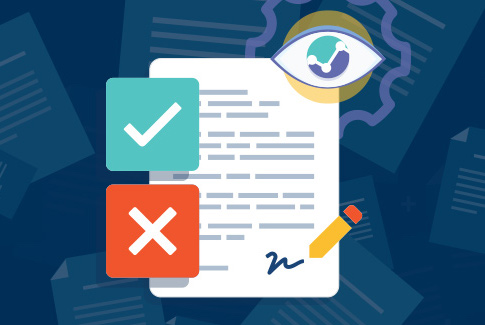
Contracts are a blessing and a curse to enterprise businesses. On one hand, the more contracts you close, the more revenue you generate. On the other hand, the more contracts you have to keep track of, the harder they are to manage. You could argue that this is a good problem to have, but when poor contract management costs the enterprise an average of 9% of revenue, it is clear this problem must be addressed.
Companies have responded by turning their attention to contract lifecycle management (CLM) tools. These digital solutions simplify end-to-end management of contracts by better organizing documents and understanding key information within them. With these CLM solutions, enterprises have become more efficient and effective in several areas, including:
- Contract preparation
- Contract drafting
- Contract negotiation
- Contract organization
- Contract success measurement
These core benefits enable companies to accomplish one common goal: do more with less. Most organizations do not have unlimited legal resources at their disposal. Instead, they employ a small team to manage their thousands (sometimes tens of thousands) of contracts. Without the right technology on hand to augment this process, organizations face potentially costly consequences.
Check out our webinar, “Combine Control with Insight to Truly Manage Contract Risks” for a full conversation on contract lifecycle management tools.
Why Most Analytics Tools Over-Promise and Under-Deliver
CLM tools have become integral to many enterprise businesses. In fact, more than 90% of organizations leverage the following types of contracting technology:
- Intake request tools for new contracts
- Workflow tools to manage escalation and approvals
- Analytics tools to analyze contracting process
Unfortunately, the use of CLM tools does not always equate to positive results. Case and point: contract analytics. What CLM tools claim to offer in terms of contract analytics capabilities are exaggerated all too often. The reason for this is that analytics tools rarely provide true language understanding.
Contracts are not only dense in language but full of complex and domain-specific terminology that only experts fully comprehend. Artificial intelligence (AI) can help to automate analysis of these contracts, but its effectiveness ultimately comes down to its level of embedded domain knowledge.
You are not looking for your AI-based solution to simply locate keywords or phrases but, rather, identify potential risks, opportunities and obligations. More specifically, you want to identify the information that describes what is supposed to happen in a business relationship. For example:
- What is each party required to do?
- Who pays what and when?
- Are there items that will impact other contracts?
With domain knowledge, you not only can identify the information important to you, but the information important to your customers (or soon-to-be customers). This intent-driven information is what will simplify the contract management process throughout each lifecycle. Without this information, CLM tools are not nearly as impactful as they can be.
Key Takeaways on CLM Tools
CLM tools have the unique ability to help you find a balance between process efficiency and risk insight. However, not all CLM tools are created equally. It is their use of AI (more specifically, knowledge-based AI) that will determine the level of improvement organizations can achieve in each.
With that said, it is important to remember that these tools are not magic bullets. You cannot simply set it and forget it. For any AI-based tool to work effectively, the organization using it must be prepared to leverage it. That means:
- Clearly define how you plan to use your CLM tool. Too many organizations see innovative tools and technology and commit to it without fully assessing how it will be used in their organization and what level of impact it will have. The more prepared you and your organization are to leverage the technology, the easier it will be to implement and generate value early on.
- Be patient with the process. Your CLM tool is not going to instantly transform your contract management process. Not only do you need to understand that from the user standpoint, but your leadership needs to understand it from an ROI perspective. However, with ample time and resources to fine tune and improve your model, you can realize significant long-term value.
There is no way to take the risk out of contracts, but with the right AI-based CLM tool, you can better identify and mitigate those risks. Many tools will claim to provide all you need, but only a knowledge-based approach can offer the level of insight you really need. With knowledge at your fingertips, contract management will be forever changed.


